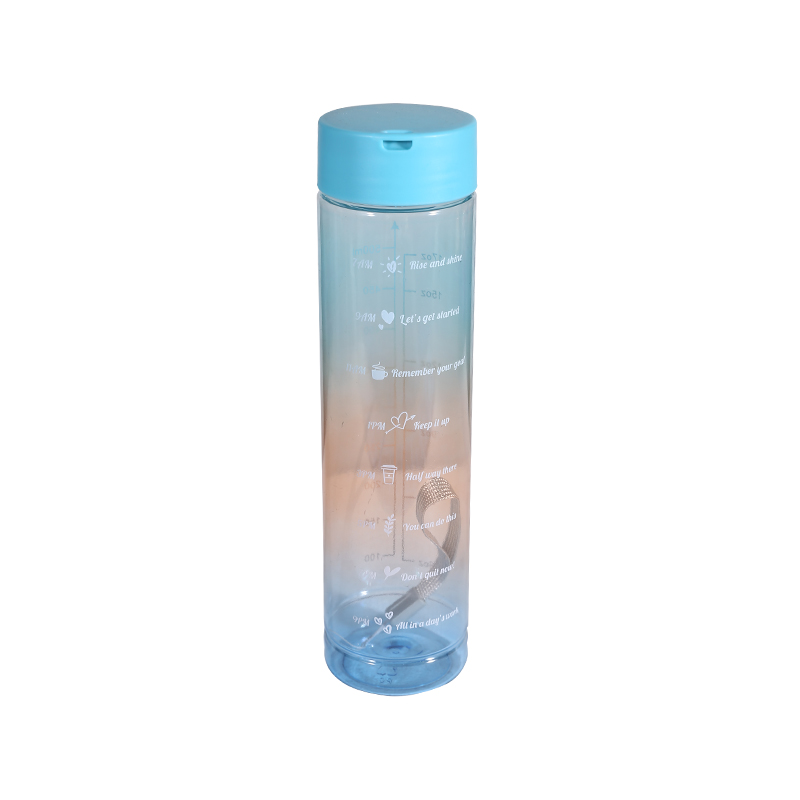A Leak Proof Plastic Water Bottle is valued for its promise of preventing spills and offering users the convenience of carrying beverages anywhere without concern. Yet, when exposed to high-temperature conditions such as hot summer days, car interiors, or outdoor sports, questions arise regarding its ability to maintain the same level of leak resistance. This is a practical issue faced by many users who rely on plastic bottles not only for hydration but also for safety and convenience in unpredictable environments.

Material Behavior Under Heat
Plastic, despite being lightweight and versatile, has properties that are sensitive to heat. In elevated temperatures, the material can expand or soften, and even minor changes in shape may compromise the integrity of the seal. High-quality food-grade plastics are engineered to withstand moderate heat, but prolonged or extreme exposure often tests their durability. If the bottle deforms slightly, the threads that connect the cap to the body may not align as precisely, causing micro-gaps where liquid can escape.
The Importance of Sealing Components
The actual sealing of the bottle usually relies on gaskets, O-rings, or silicone liners within the lid. These elements are critical in providing the tight closure that defines leak-proof performance. However, under high temperatures, rubber and silicone can lose elasticity or become brittle over time. This reduction in flexibility prevents them from fully adapting to the bottle’s rim, creating conditions that increase the likelihood of leaks. Premium designs often use heat-resistant silicone, but lower-cost alternatives may not perform consistently when subjected to stress from heat exposure.
Real-World Situations and Performance
Everyday scenarios highlight the importance of leak resistance under heat. For instance, bottles left in a parked car under direct sunlight may experience interior temperatures that exceed 50°C. Similarly, outdoor athletes or hikers in hot climates rely on their bottles to keep liquids secure while being carried in bags or strapped to gear. User experiences in these cases vary: some bottles maintain their seal without issue, while others show leakage through lid threads or condensation seeping past weakened gaskets. This inconsistency emphasizes the impact of product quality and design on real-world performance.
Comparisons with Alternative Materials
While plastic bottles are widely chosen for their light weight and affordability, other materials such as stainless steel or glass may perform differently in high temperatures. Stainless steel bottles often have more heat resistance and a sturdier structure, which reduces the risk of deformation. Glass, though less practical for outdoor use, is completely resistant to warping from heat. Plastic bottles must therefore compensate with thoughtful engineering, using specialized materials and precise lid designs to achieve competitive reliability in demanding conditions.
Maintenance and User Practices
Even the good-designed bottle can fail if not properly maintained. Users who frequently expose their bottles to high temperatures should inspect the sealing components regularly, ensuring gaskets remain intact and flexible. Cleaning the bottle, allowing it to dry before reassembly, can also prevent residue buildup that might compromise the seal. Moreover, avoiding long-term storage of the bottle in hot environments can extend its functional life, preserving its leak-proof performance across more uses.
The ability of a Leak Proof Plastic Water Bottle to maintain reliable sealing performance in high-temperature conditions depends on a combination of material strength, lid design, and sealing technology. While high-quality bottles with durable plastics and heat-resistant gaskets can withstand challenging environments, cheaper models may falter under the same conditions. For users, this means carefully considering product specifications, practicing proper maintenance, and managing exposure to heat whenever possible. With thoughtful use, a plastic water bottle can remain a dependable companion, even in climates where high temperatures are part of daily life.

 English
English 中文简体
中文简体 Español
Español